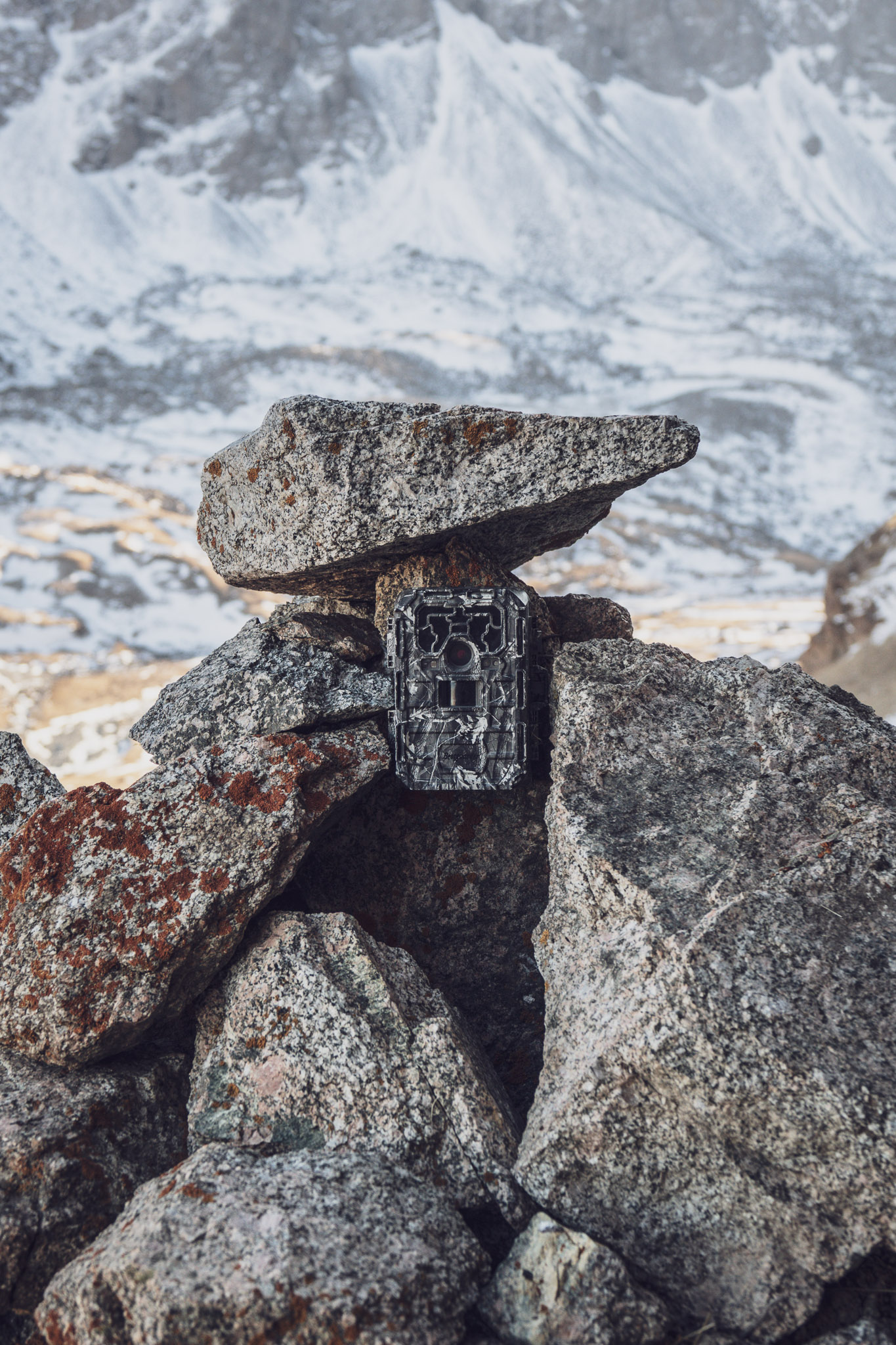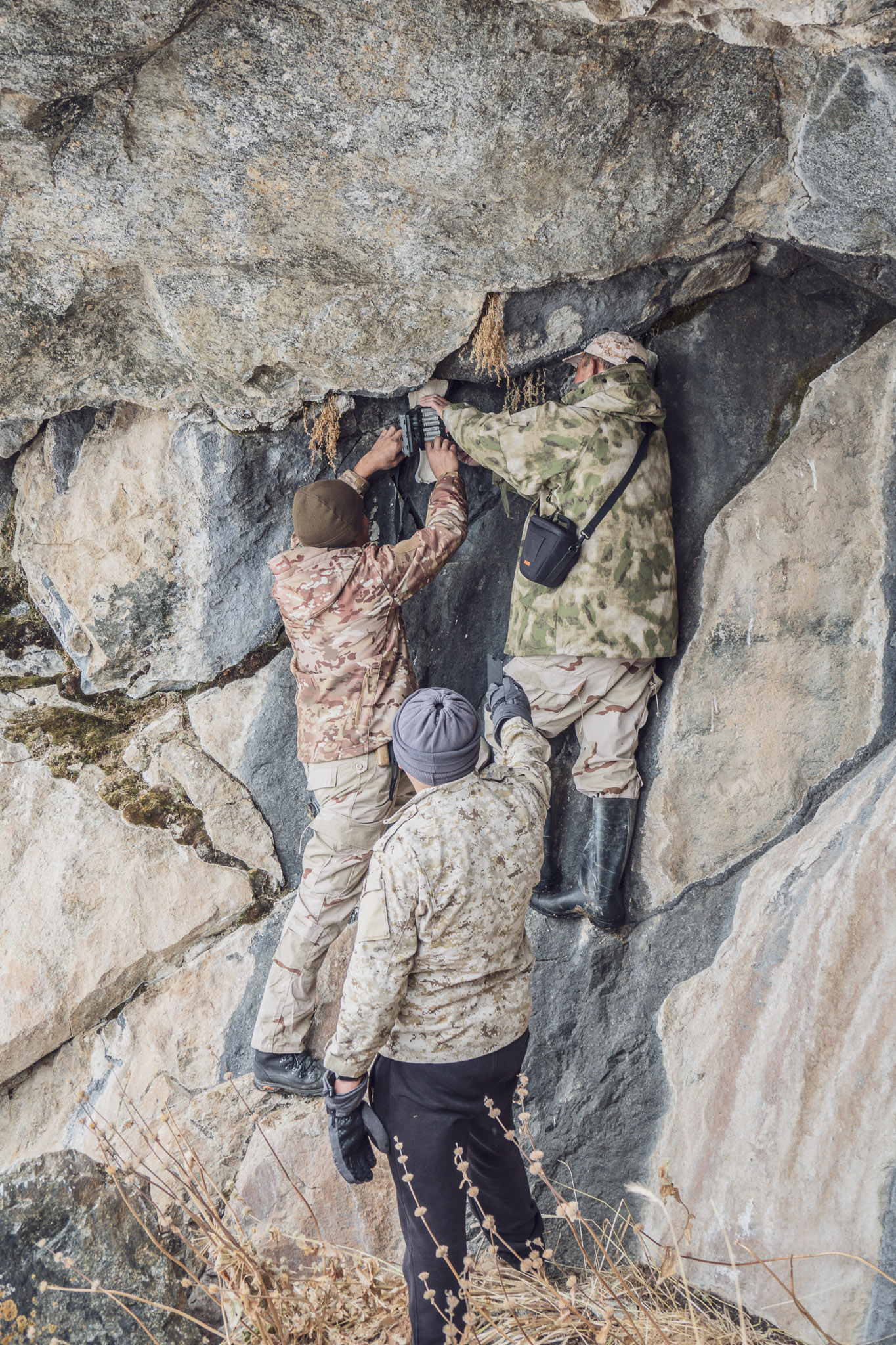Technology for conservation in the nature reserve
Baiboosun![]()
Nature Reserve Kyrgyzstan
Nature Reserve Kyrgyzstan
Technology for conservation in the nature reserve
︎ Science of wildlife selfies
![]()

A member of the team at Baiboosun setting up a new camera trap in the nature reserve
What is a camera trap?
The modern digital camera trap is simply a digital compact camera sensor wired up to a passive infrared sensor, which is able to “see” the infrared radiation given out by warm-blooded animals. This sensor looks for sudden changes in the surface temperature of the environment in front of it, which could indicate the presence of an animal.
Why use camera traps?
Camera traps have a unique set of advantages over other rival tools for conservation. A single camera trap deployed in the field can collect vast amounts of data, and over a very long time period, relative to many other sampling methods.
The modern digital camera trap is simply a digital compact camera sensor wired up to a passive infrared sensor, which is able to “see” the infrared radiation given out by warm-blooded animals. This sensor looks for sudden changes in the surface temperature of the environment in front of it, which could indicate the presence of an animal.
These are sometimes called “remote cameras”; remote cameras are triggered in the absence of human operators but not necessarily by an animal. Other names for camera traps include scouting cameras or trail cameras.
Why use camera traps?
Camera traps have a unique set of advantages over other rival tools for conservation. A single camera trap deployed in the field can collect vast amounts of data, and over a very long time period, relative to many other sampling methods.
Camera traps are also considered to be a “non-invasive” method: they do not physically capture or harm animals. Deployed correctly, they allow a window into the behaviour of animals relatively undisturbed by humans. Camera traps are also a highly effective way of sampling nocturnal species, which usually make up the majority of mammal communities. Since camera traps work around the clock unhindered, they also offer a unique window into the activity patterns of a species.



︎ A window into the unseen
Camera traps provide a glimpse into unseen world of some of the most endangered species on Earth
The importance of camera traps
Camera traps help us to uncover invaluable information about rare species and their habitats, which we can then use to ensure that they are effectively protected. For example, camera traps are being used to help conduct surveys that will provide a map of endangered animals territory. These maps let us know where these species live, while providing crucial information to share with local governments when making land-use decisions.
Camera traps help us to uncover invaluable information about rare species and their habitats, which we can then use to ensure that they are effectively protected. For example, camera traps are being used to help conduct surveys that will provide a map of endangered animals territory. These maps let us know where these species live, while providing crucial information to share with local governments when making land-use decisions.
The development of networked camera traps, capable of sending images over phone or satellite networks in near real-time, has provided a new tool in the fight against poaching. New software tools and statistical models are also making it much easier and faster to obtain high-quality information from the thousands of images that camera traps can quickly generate. This is improving our understanding of the human impact on wildlife, and is helping land managers make better decisions at both small and large scales.
The obvious appeal of using camera traps to sample wildlife communities is the fact that the raw data is so immediately captivating. Camera trap images can be used to communicate science, to raise awareness and educate, and to build support for a species or habitat. The camera-trapping method itself may also be an effective method of engaging local communities in wildlife issues.
References:
Camera-trapping for conservation: a guide to best-practices. Oliver R. Wearn & Paul Glover-Kapfer. 2017. WWF Conservation Technology Series 1(1). WWF-UK, Woking, United Kingdom.
︎ A window into the unseen
Camera traps provide a glimpse into unseen world of some of the most endangered species on Earth
The importance of camera traps
Camera traps help us to uncover invaluable information about rare species and their habitats, which we can then use to ensure that they are effectively protected. For example, camera traps are being used to help conduct surveys that will provide a map of endangered animals territory. These maps let us know where these species live, while providing crucial information to share with local governments when making land-use decisions.